Iranian Food(Persian Cuisine-Persian Cooking)
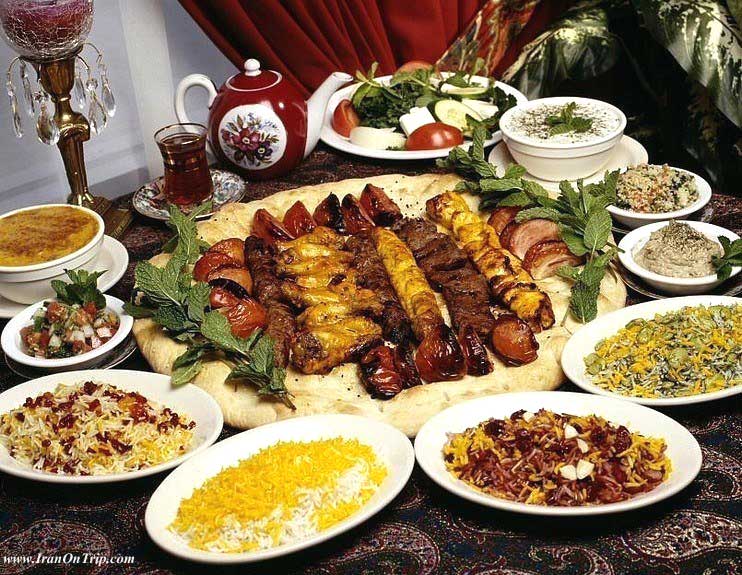
The cuisine refers to the traditional and modern styles of cooking related to Iran. The Iranian culinary style is unique to Iran, though has historically both influenced and been influenced by Iran's neighboring regions at various stages throughout the history. Specifically, these have been mutual culinary influences to and from Mesopotamian cuisine, Anatolian cuisine, and especially the Central Asian cuisine. The cuisine includes a wide variety of food families ranging from rice served with roasted meat (chelow kebab), different kinds of Persian-style Kebabs, namely Barg, Koubideh, Shishleek, Soltani, Chenjeh; various types of stews served with rice (Khoresht), namely Ghormeh Sabzi, Gheimeh, Fesenjan; different types of thick soup (Ash) including ash-e reshte, ash-e anar, ash-e dough; a special type of vegetable souffle, namely kuku; a wide variety of rice served with other food items, named in Persian “polo” for example Loobia Polo (Rice with green beans), Albaloo polo (Rice with Black Cherry), Rice with Vegetables (Sabzi Polo), Rice with Barberries (Zereshk Polo), etc. and a diverse variety of Salads, Pastries, and soft drinks specific to different parts of Iran.
Chelo-Kabab: The National Dish of Iran

Chelo-Kabab or Chelow Kabab is the national dish of Iran. The meal is simple, consisting of steamed, saffroned Persian rice and kabab, of which there are several distinct Persian varieties. This dish is served throughout Iran today, but was traditionally associated with the northern part of the country.
Chelo-Kabab is served with the basic Iranian meal accompaniments, in addition to grilled tomatoes on the side of the rice, and butter on top of the rice. Somagh (powdered sumac) is also made available, and can be sprinkled on the rice. It is an old north-western tradition (probably originating in Tabriz) that a raw egg yolk be placed on top of the rice, though this is strictly optional and no longer common. In fact, unless specifically requested, most restaurants will not serve the rice this way due to safety concerns surrounding the consumption of raw eggs.Read more
Prawn kebab
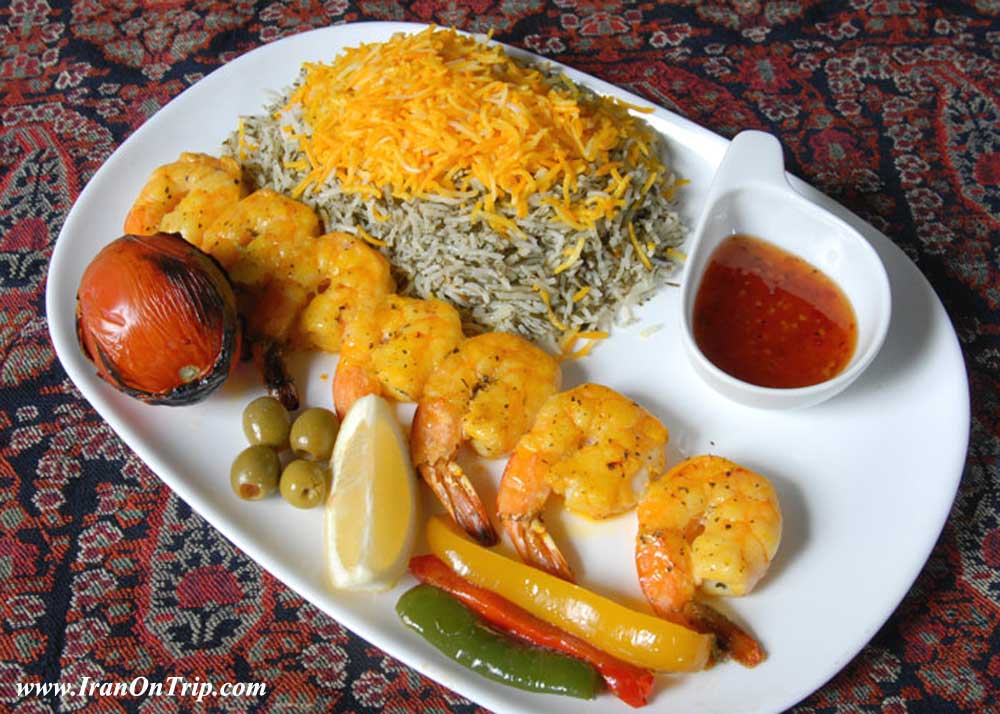
Prawn kebab is an authentic Malabar recipe. Non vegetarians love to eat prawns and they want to include this food in several dishes. You can use prawn, the seafood to make yummy starters. In coastal regions, prawn is highly consumed by the non veggie foodies. Making kebab is not difficult and cooking prawns is easy. If you have a fetish for kebabs, try prawn kebab recipe.Read more
Joojeh Kabab, Persian Grilled Saffron Chicken
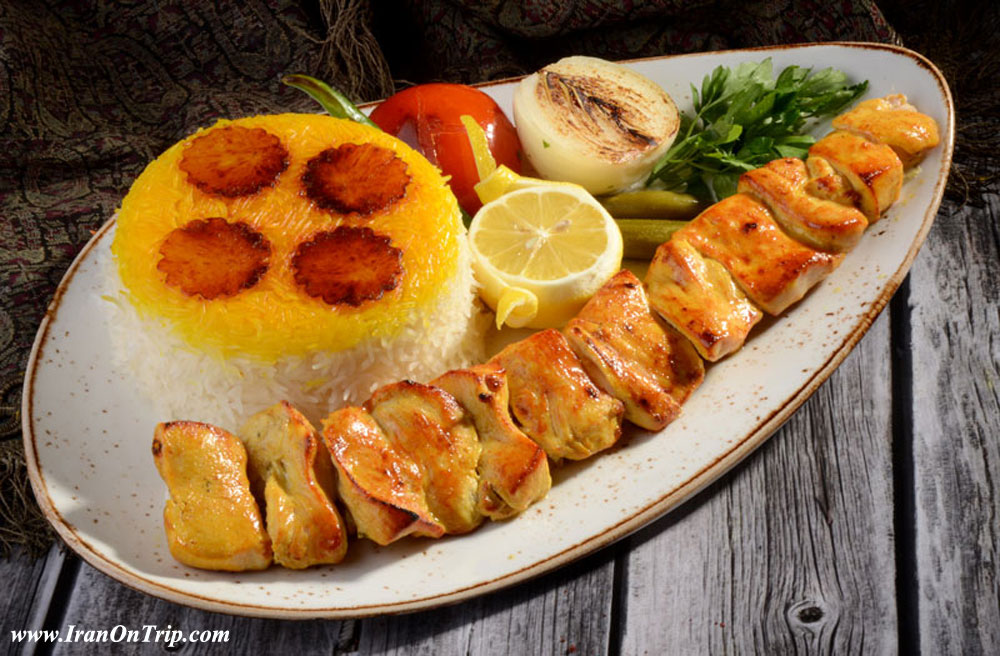
Joojeh kabab is a simple, easy to make and popular dish in Iran and is most delicious when made with fresh and tender young chicken. Joojeh kabab is usually made with skinless and boneless chicken breast. However, it could be made with the whole chicken cut into small pieces, allowing ample marinating time, which is an important step in the cooking process. It's best to let the chicken marinate overnight for the best result. For a moist, juicy and flavorful joojeh kabob, marinate the pieces in a yogurt-based sauce with olive oil, lemon juice, grated onion, saffron and salt and pepper. Typical Persian joojeh kabab is not spicy at all and a little bit on the tangy side. In our home, we like our joojeh kabab more lemony and zesty. Grilled saffron chicken is usually served right off the grill with aromatic rice, grilled tomatoes and onions. Also, grilled corn soaked in salted water would make a great side dish.Read more
Iranian Caviar
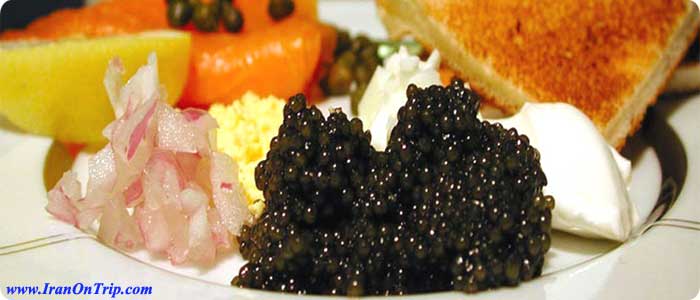
Perhaps one of the most prized and delicious products that come from Iran is the Iranian caviar. Caviar can be very expensive due to its rare and delicate nature. Iranian caviar is the roe or eggs from female sturgeon fish caught in the pristine environment along the Caspian Sea. About 90% of Caviar production of the world comes from the Caspian Sea, and it is thought the southern fish, caught along the Iranian coastline produce the best caviar in the world. Caviar is particularly delicate, and difficult to process and handle. The manual labor that goes into packaging the product naturally adds to the cost of the product.Read more
Lamb Rib Roast (Lamb Shashlik) in oven with Saffron Rice
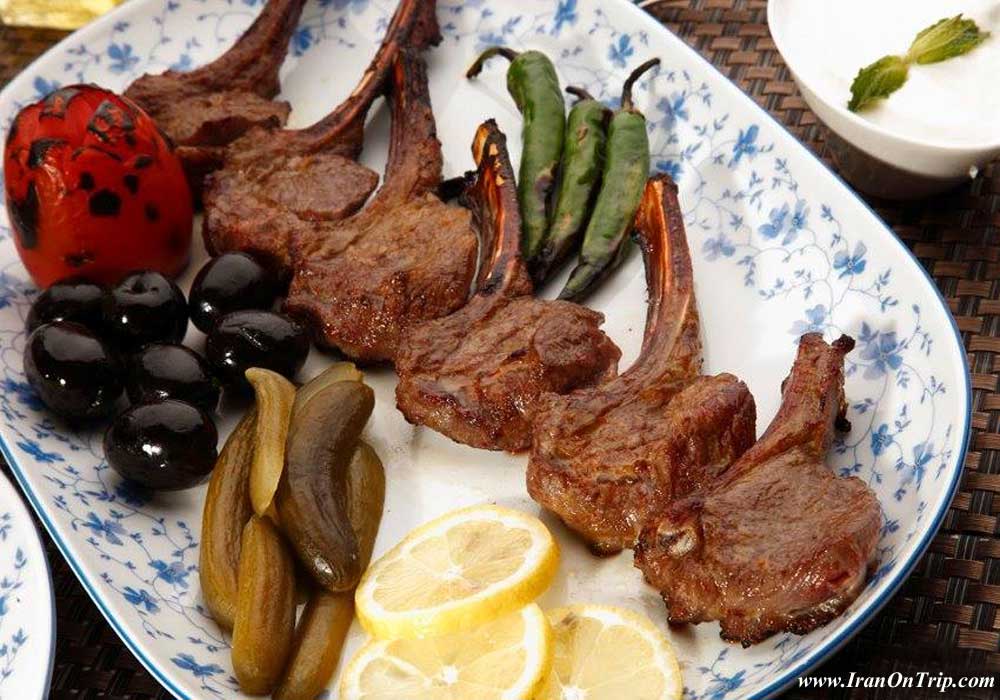
Ingredients:
1 kg Lamb Rib
One Large Onion
One bulb Garlic
Lemon juice or Fresh lemon or lime
Saffron, Salt, Pepper and 3 Cups Long Grain Rice Read more
Kabab bakhtiari(Kabab Bolghari)
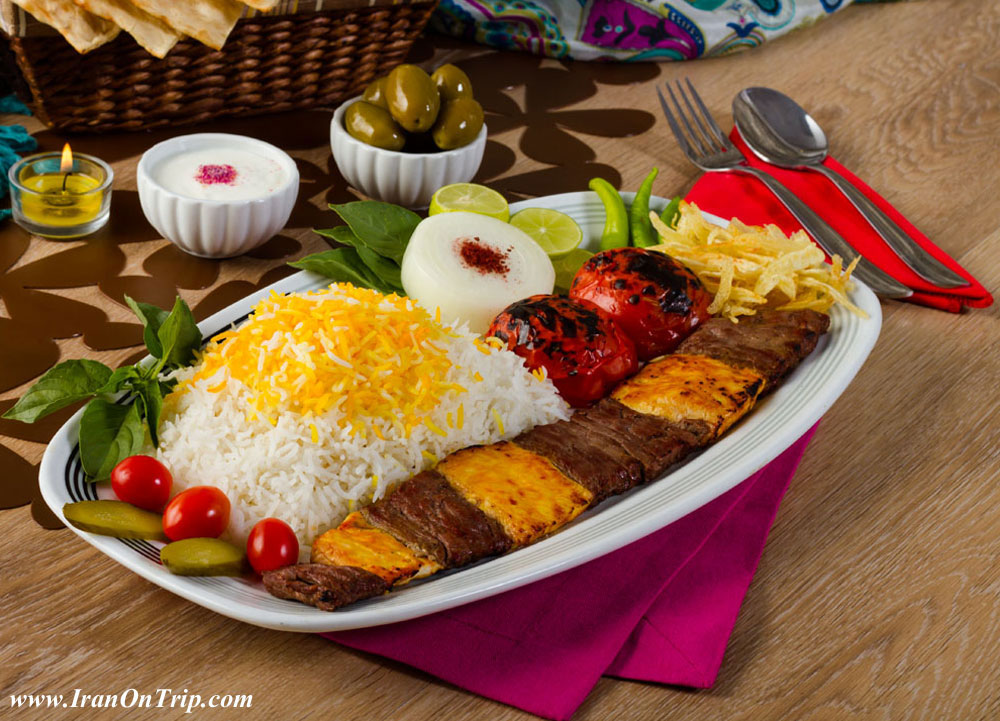
Kabab bakhtiari is a combination of jujeh kabab and kabab barg in a decussate form.
Ghormeh Sabzi
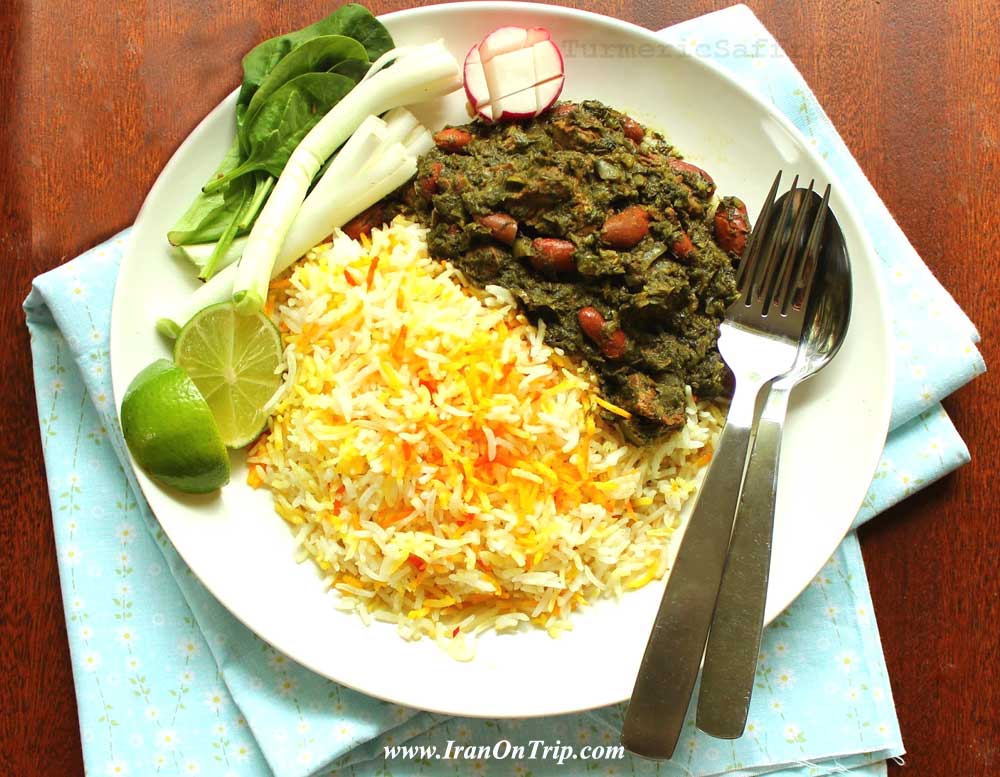
This dish is one of Persian authentic stew
Khoresh-e Ghormeh Sabzi is one of the most delicious and popular dishes among Iranians. I’ve never met anyone who didn’t like ghormeh sabzi. The combination of flavorful and aromatic herbs, slow cooked lamb cubes, fork-tender beans and dried lemons make the khoresh very tasty and nutritious.
The history of ghormeh sabzi goes back at least 500 to 1000 years(according to wikipedia) .I recall from my childhood , people would name it the king of stews .The traditional recipe forms with stew meat sauteed with onion, red beans(but I prefer kidney or Roman beans),fried herbs (persian leek,parsley,fenugreek and a little bit spinach).,dried lime(limo amani),spices(Turmeric,pepper) .The dish is then served with polo. Read more
Zereshk Polo
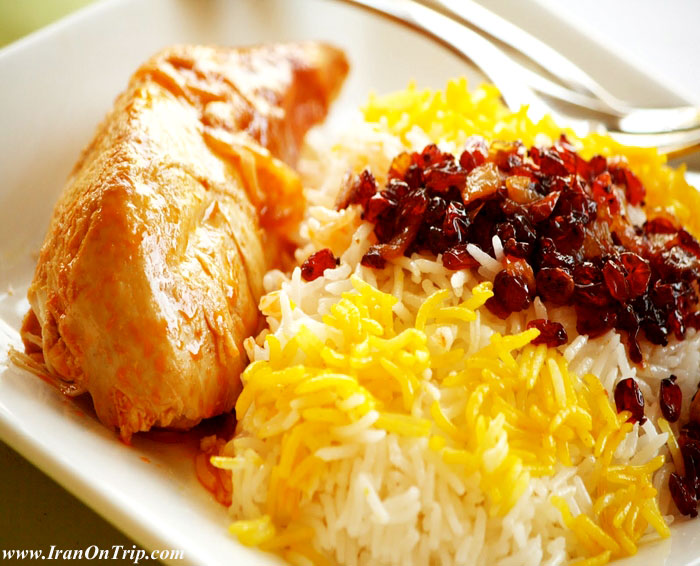
Iran is known for many of its exports …… oil, saffron, rugs, and of course Persian cats:) But one commodity that many in the West may not know of is zereshk. Iran is the biggest producer of zereshk in the world. Zereshk are dried barbarries – small delicious tart berries that have been cultivated in Iran for over 200 years. They are used in jams, dried fruit leathers and candies. But one of the most popular dishes that features zereshk is Zereshk Polo.Zereshk polo is one of the easiest and yet most elegant Persian dishes to prepare. This traditional rice dish has the perfect balance of tart and sweet. Zershk Polo is delicious on it’s own, but I find that it goes exceptionally well withSaffron and Lemon Roasted Chicken.
Kabab-e barg (Lamb Fillet Kebab)
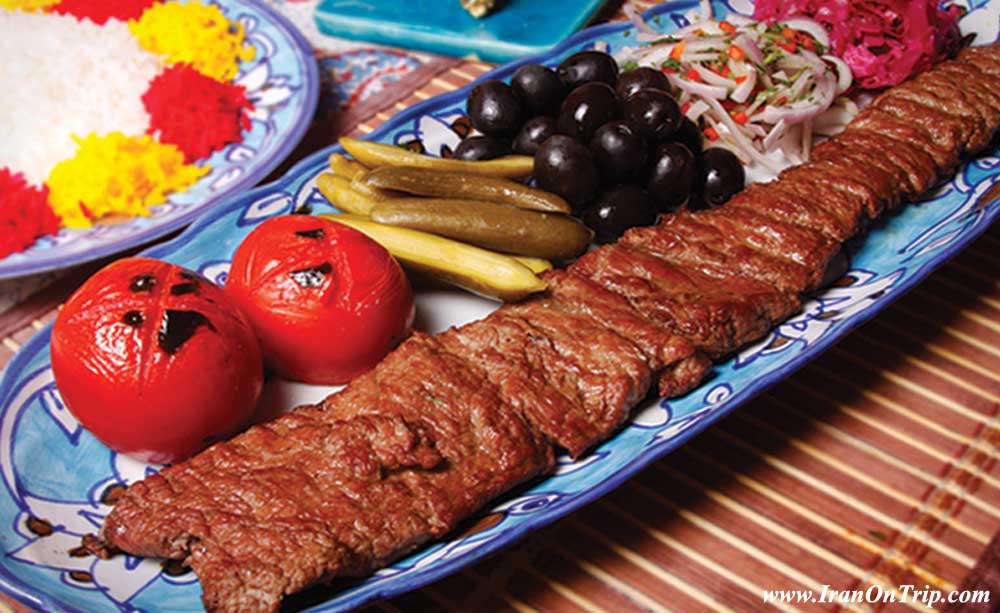
Food Name:Kabāb-e Barg (Persian: Kabāb-e Barg meaning Lamb Fillet Kebab) (Persian: کباب برگ)
Discibtion : he main ingredients of Kabab-e Barg are fillets of beef tenderloin, lamb shank, onions and olive oil.Read more
Kashk-e Bademjan

Fortunately, Persian cuisine is an eggplant lovers paradise. If I had to pick my favourite Persian eggplant dish it would be a tight race, but I think Kashk-e Bademjan would have to be the winner. Creamy and garlic-y with caramelized onion and tender, fried eggplant, this dip is ridiculously delicious. It has ruined many Persian restaurant lunches for me as I can not resist ordering it and eat so much that I have no room left for Kabab!For those of you who don’t know, kashk is whey – the liquid remaining after milk has been curdled and strained in the cheese-making process. In North America, most people’s familiarity with whey is in the form of whey protein for protein shakes. In the Middle East, whey (or kashk as we call it in Farsi), is used a great deal in cooking. It provides a wonderful flavour and a creamy consistency to a lot of dishes. Kashk and eggplant are a wonderful complement to each other. The following is the Kashk-e Bademjan recipe my mother taught me, which I believe is superior to any restaurant version I’ve had
Khorest-e Ghaimeh
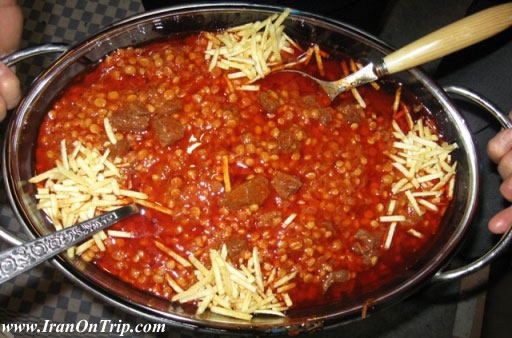
For those of you unfamiliar with Khorest, it is a Persian stew and one of the pillars of Iranian cuisine. I have to admit that I always found the idea of cooking Khorest very intimidating. It seemed complicated and time-consuming and best left up to the experts….. namely my mother. But once she began to teach me, I learnt that, while Khorests do take a long time to simmer (as do most stews), many of them are incredibly simple to prepare and are the perfect make ahead dinner.Khorest-e Ghaimeh was always one of my favourite stews growing up and one of the absolute easiest Khorests to prepare. It is a savoury mix of tender beef, yellow split peas flavoured with rich tomato and tangy dried persian limes and then topped with fried potatoes. What child wouldn’t love a stew that is essentially topped with french fries!There is much debate in my family about how the potatoes should be served. My mother and I like to serve them on top of the Khorest as a garnish so they remain crispy. My father, on the other hand, says that the “correct” way is to incorporate the fried potatoes into the stew so they absorb the delicious flavours. You be the judge.
Kabab Torsh:

Kabab torsh is a traditional kebab from Gilan province in Iran. It is made with beef – usually sirloin or tenderloin – marinated in a paste made of crushed walnuts, pomegranate juice or paste, chopped parsley, olive oil, and crushed garlic.
Mirza Ghassemi
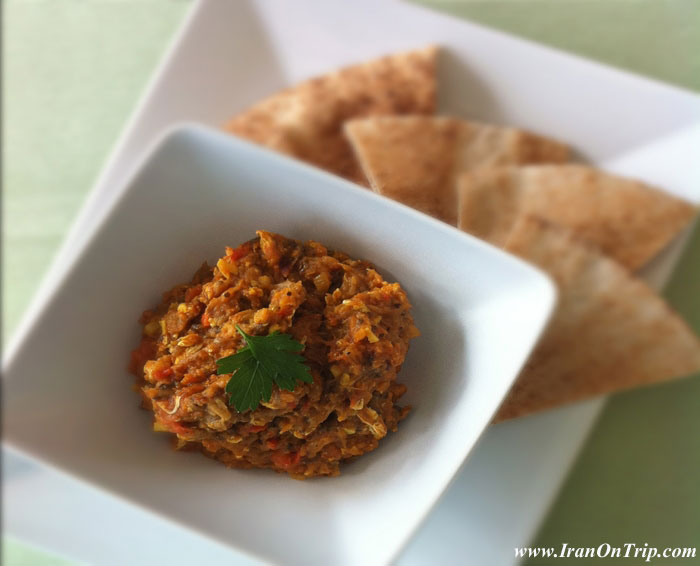
Mirza Ghassemi is a delicious blend of creamy baked eggplant, tomatoes, lots of garlic and egg. There is something poetic about the combination of eggplant and tomato……Italians have Caponata, the French have Ratatouille, the Lebanese have Menazzaleh and we Iranians have Mirza Ghassemi.Mirza Ghassemi is a Northern Iranian dish from the Gilan province. The first time I remember tasting it was in my student days at a restaurant in Montreal. As an eggplant and garlic lover I was instantly in love! I had never cooked an Iranian dish in my entire life but I called home immediately and demanded a recipe from my mother. My roommate and I attempted to re-create the dish and were surprised at how simple it was. It became a regular part of our cooking repertoire and hopefully it will become part of yours as well.
Persian Rice and Golden Potato Crust (Ta-dig)
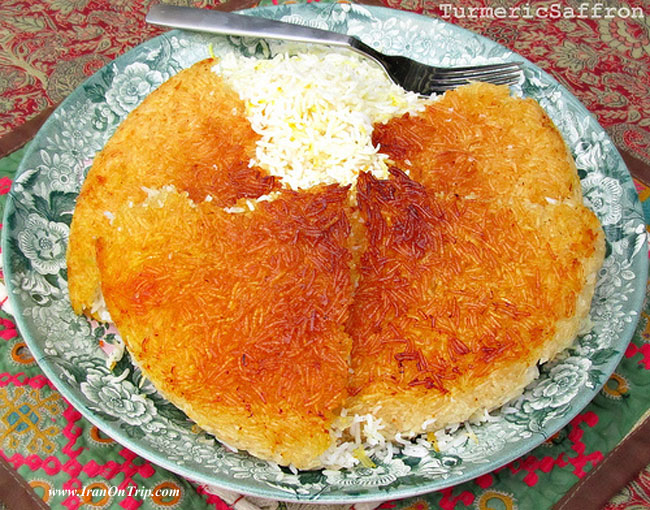
To Persians, making rice is an art form. There is a great deal of care and detail involved in making the perfect fluffy and delicate rice we are famous for. The crown jewel of Persian rice is the Ta-dig. The delicious, crunchy golden crust that forms at the bottom of the pot during the cooking process.Ta-dig is beloved by Iranians and it often disappears as soon as it hits the dining table. When I first started dating my husband, who is Canadian, my younger brother tried to convince him that non-Iranians were not allowed to eat the ta-dig in a desperate attempt to keep it all for himself.Ta-dig comes in many forms. Some make it with simple saffron rice, others add lavash bread, yogurt, tomatoes, scallions or leeks…..the possibilities are endless. But my absolute favourite is ta-dig made with thinly sliced potatoes. The potatoes form a crispy crust that almost tastes like a cross between a french fry and a potato chip……can you think of anything better than that?
********************************************************
And Restaurants in Isfahan
Restaurants in Isfahan serve both local Iranian cuisine, fast food and international delicasies. Dishes are usually of high quality and prepared of fresh ingredients. Rice is the staple food in Iran cuisine, often served coloured or flavoured. Iranian food is not ususally spicy. Rice is often served with meat or chicken. The most popular Iranain dish is a rice and kebab dish named Chelo Kebab. It is often served with vegetables like onions and tomatoes. Food is very reasonably priced. As alcohol is illegal in Iran it is not served in restaurants in Isfahan.
The most famous traditional dishes in Isfahan are:
Berian/Beryun/Biryani
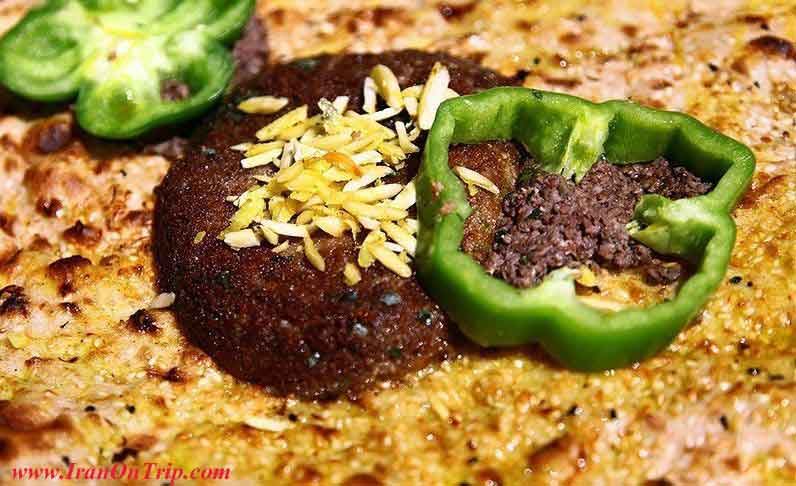
The most famouse dish in Isfahan is Beryani which is known in all of Iran as Isfahan food.This dish is made of mutton or lamb which is ground/minced and then cooked on one side in a special small pan over open fire. Berian is generally eaten with a certain type of bread, known as "nan-e-taftun".
Khoresh-e fesenjan
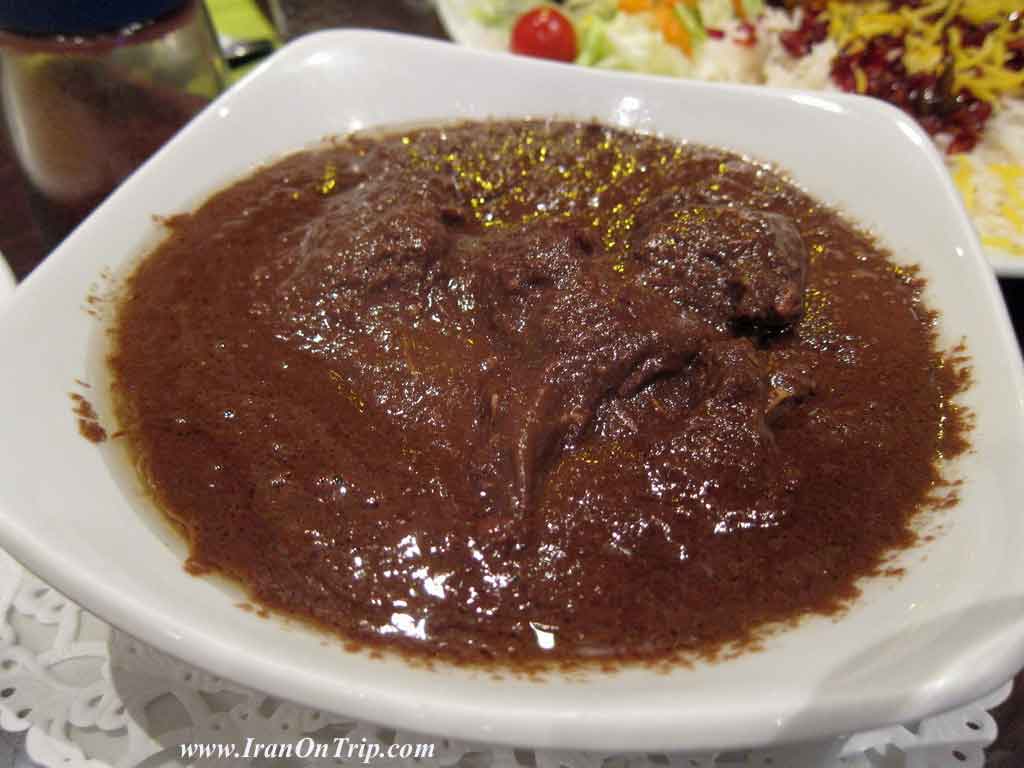
Khoresh-e fesenjān (Persian: خورش فسنجان), or simply fesenjan (Persian: فسنجان), is a dish in Persian cuisine and Mesopotamian cuisine. It is a thick, tart stew made from pomegranate syrup and ground walnuts (see bazha). It is traditionally made with poultry (duck or chicken); but also variants using balls of ground meat, ghormeh cut lamb, fish, or no meat at all are not unusual. Depending on the cooking method, it can have sweet or sour taste. It is served with Persian white or yellow rice (called polo or chelo).Read more
KHORESHT MAST ESFAHANI
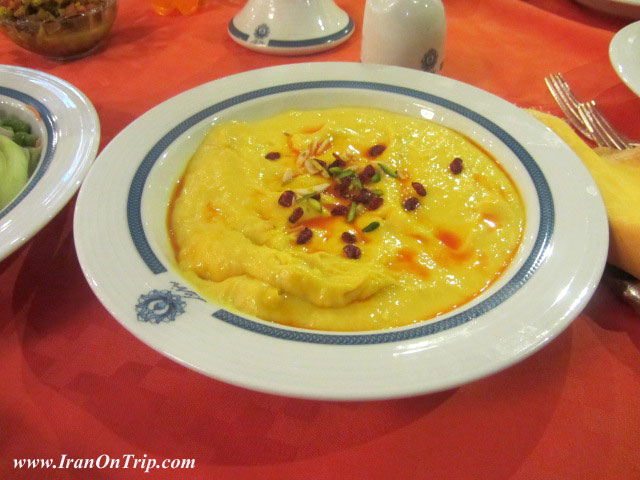
"Beef Yogurt"
• 1/4 lb (113g) Beef Neck
• 5 Tbsp Plain Yogurt
• 1/4 Tsp Saffron
• 1 Small Onion
• Turmeric
• 1 Egg Yolk
• 1/2 Cup Sugar
PREPARATIONS:
1- Soak the zafran (saffron) in boiling water for 30 minutes.
2- Boil 3-4 Cups of water.
DIRECTIONS:
1- Place the beef in a pot. Cut the onion in half and put it in the pot.
2- Add turmeric and pour in boiling water until it covers the beef, cover the pot with a lid.
3- Simmer the pot over low heat for 45 minutes (until beef is fully cooked).
4- Shred and mash the beef with a hand blender.
5- Beat the egg yolk in a pot.
6- Add the sugar (1/2 cup) to the pot and stir.
7- Add 5 tbsp of plain yogurt (Add more yogurt if the mixture is still thick) and blend thoroughly until well mixed.
8- Heat the pot over low heat and keep stirring.
9- Continue stirring until the mixture becomes creamy.
10- Add the mashed beef to the pot and continue stirring until well mixed.
11- Add the saffron to the pot and continue stirring until well blended.
12- Leave the mixture at room temperature until it cools down then place it in the refrigerator.
13- Serve cold. Decorate with pistachios and dried barberries.
.....
.....
.....

.jpg)



























